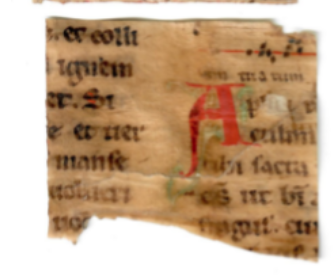sometimes fragments are bits of nice books that got repurposed, but sometimes they're really genuinely scrappy, like this lil guy fragmentarium.ms/view/page/F-co… 

doesn't seem to be anything on the back, and the chants are a bit of an odd combination, too. gonna choose to believe this was somebody's cue sheet.
should say, the chants are just two responsories to go with readings from Judith in the summer. that part isn't that weird. doing it in this order happens only about 1/2 the time, but also not that weird. cantusindex.org/id/006492 cantusindex.org/id/006488
instead we march right along to the next responsory, apparently. which should start something like this: 

...except we haven't got the first words in our fragment. actually the little custos at the end of the line suggests we go straight on without stopping!! 

so we have a bit of a Frankenchant, gluing together bits from two places to make a big long thing. not sure why one might do this. an experiment?
• • •
Missing some Tweet in this thread? You can try to
force a refresh















